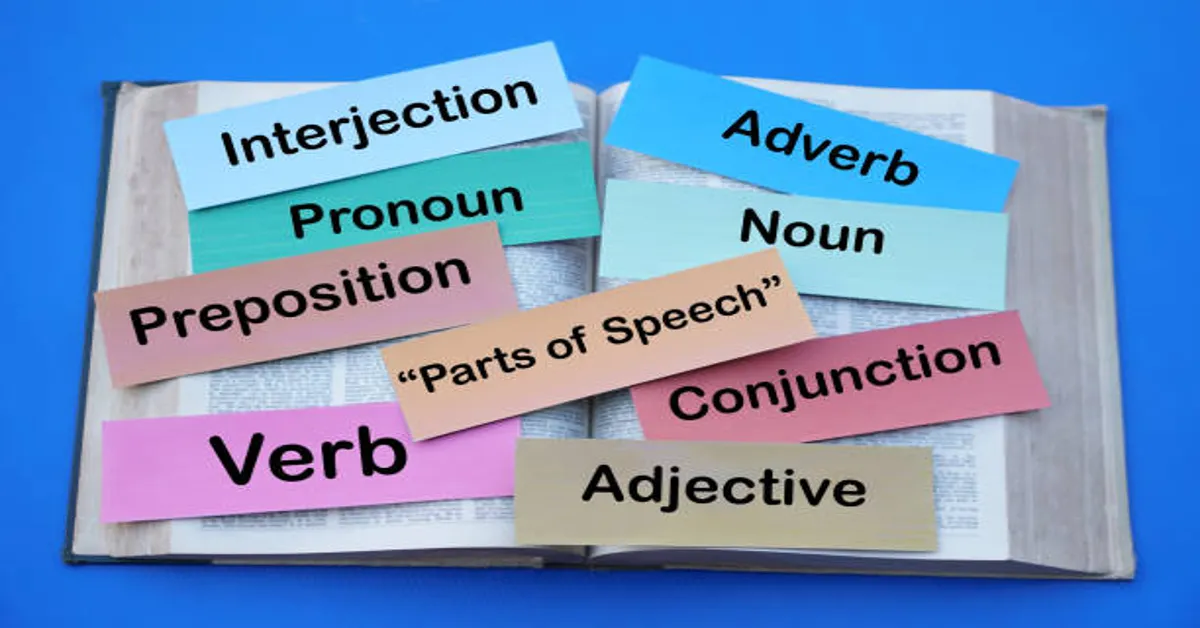In the world of online erotic literature, few platforms are as well-known or influential as Literotica. This expansive community has supported thousands of writers and millions of readers for decades, offering a diverse library of erotic stories, fantasies, and adult narratives. At the core of its success lies a simple but powerful feature—tags. These small pieces of metadata play a critical role in organizing, filtering, and personalizing the user experience. Despite their importance, many users—both writers and readers—don’t fully understand how Literotica tags function or how best to use them. This article provides a comprehensive look at what Literotica tags are, how they’re structured, how to use them effectively, and what role they play in community culture, user satisfaction, and creative freedom.
What Are Literotica Tags?
Literotica tags are keywords or short phrases added to a story submission to categorize its content. These tags describe key themes, acts, roles, orientations, relationship dynamics, and fetishes included in the story. They allow readers to easily discover content that matches their interests while helping writers attract the right audience for their work.
Tags are not unique to Literotica—many online platforms use them—but in the context of Literotica, they serve a special function. They act as both filters and identifiers, guiding readers through a vast ocean of content while ensuring content alignment with personal preferences, limits, or curiosities. Tags also contribute to how stories appear in search results and influence their visibility within specific genre communities.
Unlike genre classifications (like “romance,” “sci-fi,” or “non-consent”), tags drill down into the details, providing a granular look at what readers can expect. For example, within a romance story, tags might include “oral,” “first-time,” “submission,” or “masturbation.” These tags offer more precision than a broad genre label, which is especially important for readers who know what they’re looking for—or what they want to avoid.
Why Tags Matter So Much on Literotica
The importance of tags on Literotica cannot be overstated. Given the personal and often sensitive nature of adult content, users need clear, accurate, and honest indicators of what a story includes. This serves several important purposes:
- Improved Discoverability: Readers can filter and search by tags to find stories that match specific interests. Tags allow users to narrow down millions of options to a curated selection of relevant stories.
- Informed Consent and Boundaries: Not every reader enjoys every type of erotica. Tags help readers avoid content they may find disturbing or triggering while allowing them to seek out precisely the kind of experiences they do want.
- Community Organization: Tags help build micro-communities around specific interests. Whether readers are into BDSM, LGBTQ+ themes, supernatural erotica, or romantic exploration, tags help unite these preferences under recognizable banners.
- Writer Visibility: For authors, proper tagging can make or break a story’s success. Accurately tagging helps ensure the story reaches the right readers, which can lead to more views, comments, and positive ratings.
- Algorithmic Prioritization: While Literotica’s search functions aren’t as complex as those of major social media platforms, tags still influence how content is ranked, recommended, and categorized.
In short, tags act like bridges, connecting writers with the right audience while helping readers find exactly what they desire in the most respectful and efficient way possible.
Types of Literotica Tags
There are many types of tags used on Literotica, and while the platform does not publish a definitive list, community norms and frequent usage provide a fairly consistent range. The most common categories include:
1. Content/Action-Based Tags
These describe the specific sexual acts or erotic scenarios in the story. Examples include:
- “Oral”
- “Anal”
- “Masturbation”
- “Voyeur”
- “Exhibitionism”
- “Cumplay”
These tags offer a direct preview of the physical acts within a story and are among the most searched tags on the platform.
2. Role and Relationship Tags
These define the character dynamics and emotional relationships in the narrative:
- “Boss/Employee”
- “Strangers”
- “Teacher/Student”
- “Friends to Lovers”
- “Polyamory”
These tags help readers anticipate the interpersonal setting of the story, allowing them to select narratives with dynamics they find relatable or arousing.
3. Orientation Tags
Sexual orientation is a central element in erotica. These tags allow readers to find stories that match their identity or curiosities:
- “M/M” (Male/Male)
- “F/F” (Female/Female)
- “Transgender”
- “Bi-curious”
These tags are essential in offering representation and tailored content.
4. Consent and Power Tags
These tags denote the emotional and psychological tone of the narrative:
- “Consensual”
- “Non-consensual”
- “Dubious Consent”
- “BDSM”
- “Dom/Sub”
Power dynamics are central to many erotica categories, and tagging stories accurately in this area is especially crucial for consent and reader boundaries.
5. Fantasy and Kink Tags
These cover less conventional or niche desires, often involving roleplay, fetish, or imagination-driven experiences:
- “Tentacles”
- “Incest”
- “Age Play”
- “Medical Play”
- “Furry”
- “Roleplay”
- “Mind Control”
These tags are often the most controversial and are generally subject to community rules or platform-specific boundaries. That said, they are essential in allowing people to explore their fantasies in a safe, non-judgmental space.
Tagging Best Practices for Writers
For authors who publish on Literotica, understanding how to use tags effectively is just as important as crafting a good story. Here are several tagging best practices:
Be Honest and Specific
The number one rule in tagging is honesty. Misleading readers by tagging a story with “BDSM” when it contains no power play—or vice versa—can quickly result in negative comments and reduced trust. It’s always better to be specific rather than vague. If a story includes light bondage but no full domination, “light bondage” is more appropriate than simply “BDSM.”
Don’t Over-Tag
It may be tempting to tag your story with every trending term to gain more views, but this can backfire. Over-tagging dilutes relevance, confuses readers, and may be flagged as spammy behavior. Focus on 5 to 10 highly relevant tags that truly describe your story’s themes and content.
Consider Emotional and Relational Themes
Tags should reflect not just the physical actions but the emotional core of the story. Is it romantic? Is it about taboo attraction? Is it dark or playful? Including emotional descriptors helps attract the right kind of reader.
Avoid Misrepresenting Sensitive Content
Especially with themes involving non-consensual acts, age-differential play, or taboo subjects, accurate and sensitive tagging is vital. Not doing so can harm readers emotionally or violate platform rules.
Update Tags Over Time
As the platform evolves and new tags become commonly accepted, updating older stories with refreshed tags can help resurface them to modern readers and align with current search behavior.
Tag Etiquette and Community Culture
Tagging on Literotica is not just a mechanical function—it’s part of the broader culture of respect, self-expression, and mutual consent. The community places a high value on transparency and reader comfort. Writers are expected to treat tags not as clickbait tools but as essential disclosures. Likewise, readers use tags as part of their own boundaries and self-care, choosing what to engage with and what to avoid.
There’s also an ongoing discussion about how tags relate to morality and creative freedom. Literotica, like most adult platforms, walks a fine line between allowing creative expression and preventing the dissemination of harmful or abusive content. Tags become a central feature in that balance. When used responsibly, they enable a safer, more consensual form of erotic exploration.
How Readers Can Use Tags to Improve Their Experience
Readers on Literotica can get much more from the platform by using tags effectively:
- Use Tags to Filter Searches: When searching for stories, add specific tags to narrow down content to what excites you most. For example, “F/F + Voyeur + Romance” will likely lead to very different stories than “M/M + Rough + BDSM.”
- Create Personalized Lists: Save stories by tags or bookmark authors who consistently tag accurately. Over time, this builds a personalized reading feed.
- Avoid Triggering Content: If certain content is off-limits for you emotionally, scan the tags before clicking. Most responsible authors tag triggering or extreme themes clearly.
- Explore New Interests: Tags are also a great way to discover new genres or fantasies you hadn’t considered. Browsing by unfamiliar tags can expand your erotic vocabulary and understanding.
The Future of Literotica Tags
As platforms like Literotica continue to grow and diversify, the role of tags will likely expand. Future possibilities include:
- User-Generated Tag Suggestions: Allowing readers to suggest tags on stories could add another layer of accuracy.
- Tag Blacklists: Letting users hide or block stories containing specific tags to curate their feeds.
- AI-Assisted Tagging: Using machine learning to analyze story content and suggest more accurate tags.
- Tag-Based Communities: Creating dedicated forums or clubs around popular tags or fetish groups.
These developments would further enhance how users interact with content, increasing personalization, trust, and safety.
Conclusion
Literotica tags are a deceptively simple tool with deep impact. They influence how stories are found, who reads them, and how they’re interpreted. For writers, accurate tagging is a key part of publishing ethically and successfully. For readers, tags are essential for navigating desire, setting boundaries, and exploring safely. They form the backbone of Literotica’s community—providing structure in a space defined by freedom. Whether you’re a seasoned author or a curious newcomer, taking time to understand and respect how tags work will significantly enrich your experience on the platform.
ALSO READ: Byadi: A Deep Dive into the Culture, History, Economy, and Social Life of a Unique Town
FAQs About Literotica Tags
1. What are Literotica tags used for?
Tags on Literotica categorize story content by theme, act, relationship type, or fetish, helping readers find stories that match their interests and boundaries.
2. Can I create my own tags as a writer on Literotica?
Yes, Literotica allows authors to create custom tags, but using commonly accepted tags increases visibility and helps readers find your story more easily.
3. How many tags should I use on a Literotica story?
It’s best to use 5 to 10 accurate and relevant tags. Over-tagging can confuse readers or be seen as spammy, reducing the story’s credibility.
4. Are there tags for sensitive or triggering content?
Yes, authors are expected to tag content involving non-consensual acts, age play, or taboo themes appropriately to protect reader boundaries and comply with platform rules.
5. Can I search for stories using multiple tags?
Absolutely. Using multiple tags in your search query allows you to find stories that include specific combinations of themes or acts, giving you a more curated experience.









